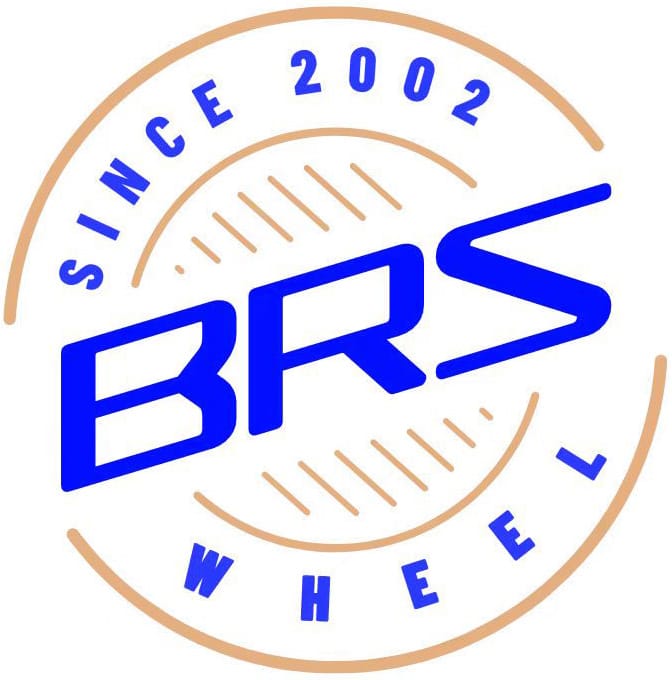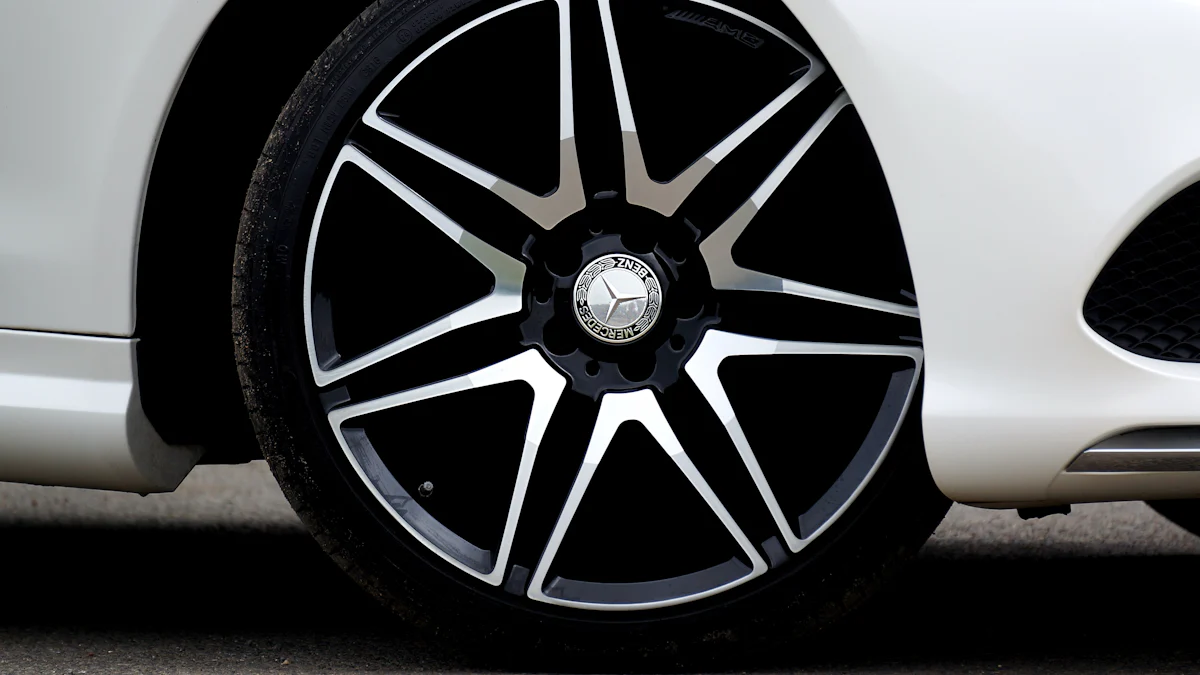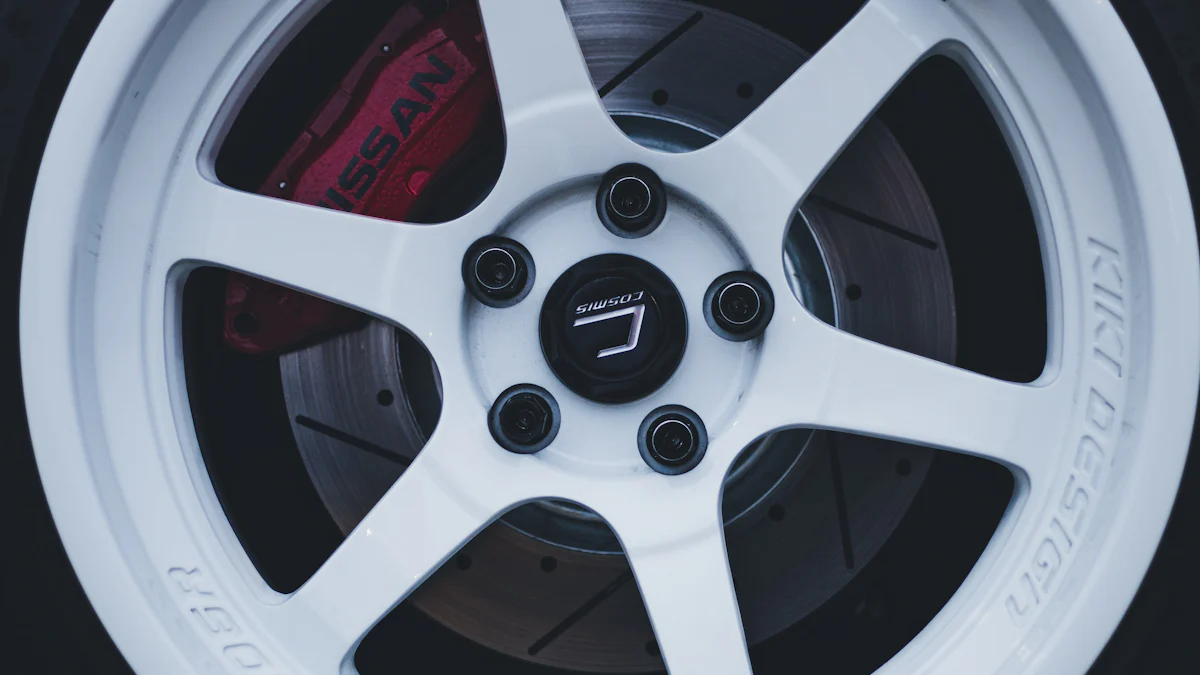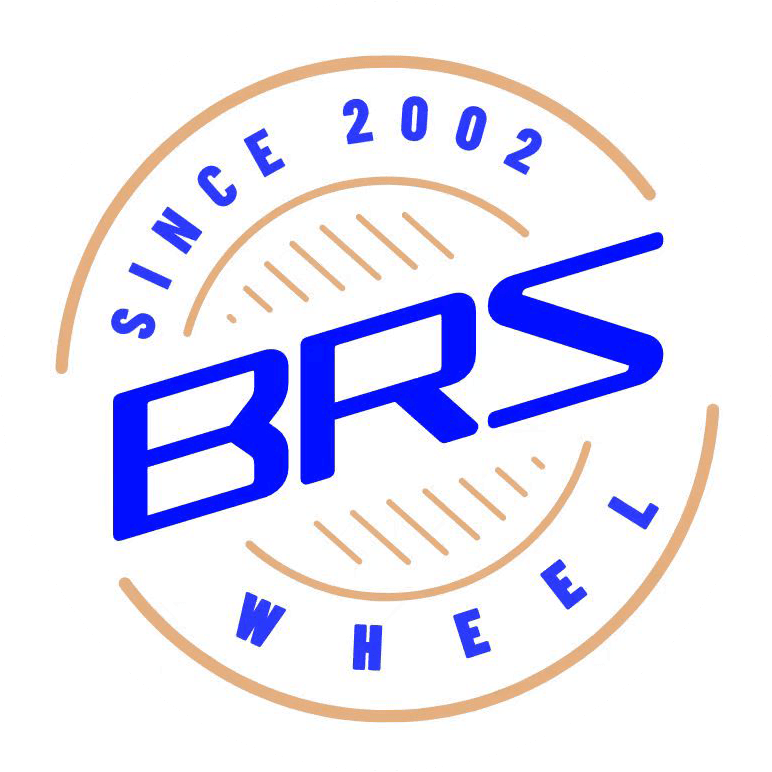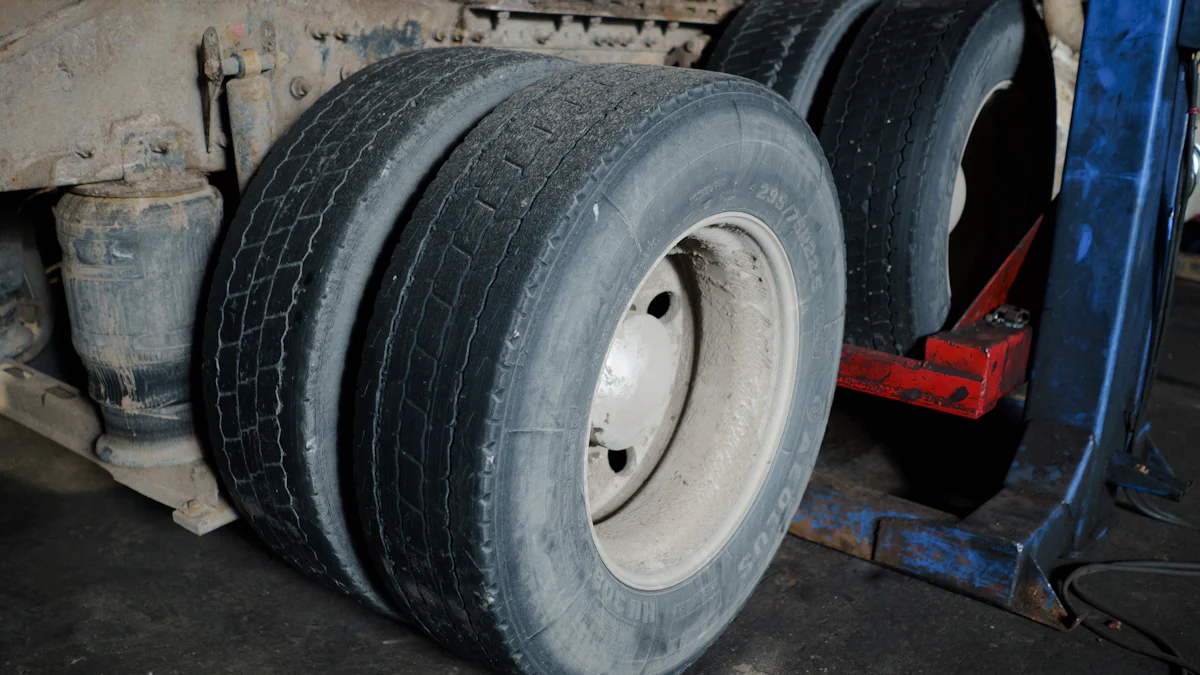
Taking care of your wagon steel wheels isn’t just about keeping them looking good. It’s about safety and performance. Regular wheel care prevents rust and damage, ensuring they last longer. When you clean and maintain them properly, you’ll avoid costly repairs and enjoy smoother rides every time.
Regular Cleaning for Wagon Steel Wheels

Keeping your wagon steel wheels clean is one of the easiest ways to extend their life and maintain their performance. Regular cleaning prevents dirt buildup and rust, ensuring your wheels stay in top shape. Let’s dive into the tools, methods, and tips you’ll need for effective wheel care.
Essential Tools and Materials
Before you start, gather the right tools. You’ll need a bucket, mild soap or wheel cleaner, a soft-bristle brush, and a microfiber cloth. A garden hose or pressure washer can help rinse off dirt quickly. For stubborn grime, a degreaser works wonders. Don’t forget gloves to protect your hands during cleaning.
Step-by-Step Cleaning Guide
- Rinse the Wheels: Use a hose to remove loose dirt and debris. This step prevents scratches during scrubbing.
- Apply Cleaner: Spray a wheel cleaner or soapy water onto the surface. Let it sit for a minute to loosen grime.
- Scrub Gently: Use the soft-bristle brush to scrub the wheels. Pay attention to crevices and hard-to-reach spots.
- Rinse Thoroughly: Wash off all the soap and dirt with clean water. Ensure no residue remains.
- Inspect the Wheels: Check for any signs of rust or damage while cleaning. Early detection helps with maintenance.
Best Practices for Drying After Cleaning
Drying is just as important as washing. Use a microfiber cloth to wipe the wheels immediately after rinsing. This prevents water spots and reduces the risk of rust. Avoid air-drying, as it can leave streaks. If you’re in a hurry, a leaf blower can speed up the process. Always store your wagon in a dry area to keep the wheels in pristine condition.
Pro Tip: Make regular cleaning a habit. A quick wash every two weeks keeps your wagon steel wheels looking great and performing well.
Protective Coatings to Prevent Rust
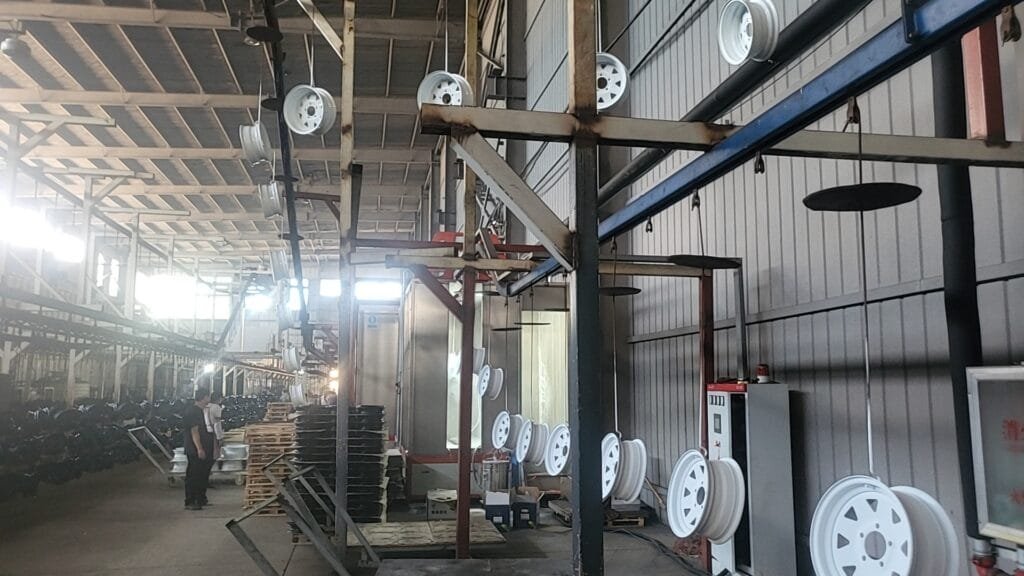
Rust can be a real enemy for your wagon steel wheels. It weakens the structure and shortens their lifespan. Adding protective coatings is one of the best ways to shield your wheels from corrosion and keep them looking great. Let’s explore the options and how you can apply them effectively.
Types of Rust-Inhibitor Sprays
You’ll find several rust-inhibitor sprays on the market, each designed to protect metal surfaces. Look for sprays labeled as “anti-corrosion” or “rust-preventive.” Some popular options include oil-based sprays, which create a barrier against moisture, and wax-based sprays, which offer long-lasting protection. If you live in a humid area or drive on salted roads, choose a heavy-duty spray for extra durability.
How to Apply Protective Coatings
Applying protective coatings is easier than you might think. Start by cleaning your wheels thoroughly. Make sure they’re completely dry before you begin. Shake the spray can well, then hold it about 8-10 inches away from the wheel. Apply an even layer, covering all surfaces, including the edges and crevices. Let the coating dry for the recommended time on the label. For maximum protection, consider applying a second coat.
Tip: Always work in a well-ventilated area when using sprays. Wear gloves to keep your hands clean and safe.
Seasonal Maintenance Tips
Seasons can take a toll on your wheels, so adjust your maintenance routine accordingly. In winter, reapply protective coatings more frequently to combat road salt and moisture. During summer, inspect your wheels for signs of wear or peeling coatings. Regularly repairing and using powder-coated wheels can ensure your wheels remain protected throughout the year.Don’t forget to store your wagon in a dry place to minimize exposure to moisture.
Pro Tip: Keep a can of rust-inhibitor spray handy. A quick touch-up after washing your wheels can go a long way in preventing corrosion.
DIY Wheel Maintenance and Inspections
Taking charge of your wagon steel wheels with DIY wheel maintenance can save you time and money. Regular inspections help you catch issues early, keeping your wheels in top condition. Let’s explore what to look for and when to call in the pros.
Identifying Signs of Wear and Tear
Start by examining your wheels closely. Look for rust spots, dents, or scratches. These can weaken the structure over time. Check the surface for uneven wear, which might indicate alignment issues. If you notice wobbling while using your wagon, it’s a sign something’s off. Don’t forget to inspect trolley wheels if you use them for heavy loads. Early detection of wear and tear ensures your wheels stay safe and reliable.
Checking for Loose Bolts and Cracks
Loose bolts can lead to serious problems. Use a wrench to check if all bolts are tight. If you find any that are loose, tighten them immediately. Cracks are another red flag. Inspect the wheel rims and spokes for any visible cracks. Even small ones can grow and cause failure. Regularly inspecting these areas is a key part of trolley wheel maintenance and overall wheel care.
When to Seek Professional Help
Sometimes, DIY isn’t enough. If you spot deep rust, large cracks, or severe misalignment, it’s time to call a professional. They have the tools and expertise to handle complex repairs. Don’t wait too long—delaying repairs can make the problem worse. Regularly inspect your wheels and act quickly when you notice serious issues.
Tip: Keep a checklist for your DIY wheel maintenance routine. It’ll help you stay organized and ensure nothing gets overlooked.
Lubrication and Alignment for Optimal Performance
Keeping your wagon steel wheels in top shape isn’t just about cleaning and inspections. Lubrication and alignment play a huge role in ensuring smooth performance and extending their lifespan. Let’s break it down step by step.
Choosing the Right Lubricant
Not all lubricants are created equal. You’ll want to pick one that’s specifically designed for metal components. Silicone-based or lithium grease works great for steel wheels. These lubricants reduce friction and protect against moisture, which helps prevent rust. Avoid using heavy oils or motor oil—they can attract dirt and cause buildup over time. Always check the product label to ensure it’s safe for your wheels.
Tip: Keep a small tube of lubricant in your toolbox. It’s handy for quick touch-ups when you notice squeaky or stiff wheels.
Proper Lubrication Techniques
Applying lubricant isn’t complicated, but doing it right makes a difference. Start by cleaning the wheel’s moving parts, like the axle and bearings. Use a cloth to remove dirt and old grease. Once clean, apply a small amount of lubricant directly to these areas. Rotate the wheel to spread it evenly. Wipe off any excess to avoid attracting dust. Regular lubrication every few months keeps your wheels rolling smoothly.
Pro Tip: Don’t overdo it! Too much lubricant can cause a mess and lead to dirt buildup.
Ensuring Accurate Wheel Alignment
Misaligned wheels can cause uneven wear and make your wagon harder to maneuver. To check alignment, place your wagon on a flat surface. Look at the wheels from the front and side. They should sit straight and parallel to each other. If you notice any tilting or uneven spacing, adjust the axle or consult a professional. Proper alignment reduces strain on your wagon steel wheels and improves overall performance.
Note: Regularly inspect alignment, especially if you use your wagon on rough terrains. Small adjustments can save you from bigger issues later.
Load Capacity and Usage Guidelines
Understanding Weight Limits for Steel Wheels
Knowing the weight limits of your wagon steel wheels is crucial. Every wheel has a maximum load capacity, which tells you how much weight it can safely support. You’ll usually find this information in the product manual or stamped on the wheel itself. For example, a standard steel wheel might handle up to 500 pounds, but custom wheels could have different limits. Always check the specifications before loading your wagon.
Tip: If you’re unsure about the weight limit, contact the manufacturer or refer to the product details. Overloading can lead to wheel failure, so it’s better to double-check.
Avoiding Overloading and Its Risks
Overloading your wagon isn’t just bad for the wheels—it’s dangerous. Too much weight can cause the wheels to bend, crack, or even break. This puts you and others at risk. Plus, it can damage the axle and reduce the lifespan of your wagon. To avoid overloading, distribute the weight evenly and stay within the recommended limit. If you’re carrying heavy items, consider using a wagon with larger wheels designed for higher loads.
Alert: Never ignore signs of strain, like wobbling wheels or unusual noises. These could mean your wagon is overloaded.
Tips for Safe Usage on Various Terrains
Different terrains require different approaches. On smooth surfaces like pavement, your wagon will roll easily, even with a full load. But rough or uneven terrain, like gravel or dirt, can strain the wheels. Reduce the load when using your wagon on these surfaces. For steep inclines, secure the load to prevent shifting. If you’re navigating wet or muddy areas, clean the wheels afterward to remove debris.
Pro Tip: Use larger, wider wheels for off-road use. They provide better stability and reduce the risk of damage.
Replacement and Long-Term Wheel Care
Recognizing When to Replace Wheels
Knowing when to replace your wagon steel wheels is crucial for safety and performance. Look for signs like deep rust, bent rims, or cracks. These issues weaken the wheel’s structure and can lead to failure. If you notice wobbling or uneven rolling, it’s time to inspect closely. Wheels that no longer align properly or show excessive wear should be replaced immediately. Regular inspections help you catch these problems early, so you can avoid accidents and maintain durability.
Tip: Keep track of how often you use your wagon. Frequent use on rough terrains may wear out wheels faster.
Proper Disposal of Old Wagon Steel Wheels
When it’s time to replace your wheels, don’t just toss the old ones in the trash. Steel wheels are recyclable, which makes them an eco-friendly material. Check with your local recycling center to see if they accept steel wheels. Some centers even offer small incentives for recycling. If your wheels are still in decent condition, consider donating them to someone who can repurpose them. Proper disposal not only helps the environment but also ensures you protect your rims from unnecessary waste.
Long-Term Storage Recommendations
If you’re not using your wagon for a while, store the wheels properly to maintain their durability. Clean them thoroughly to remove dirt and moisture. Apply a rust-inhibitor spray for added protection. Store the wheels in a dry, cool place away from direct sunlight. Use wheel covers or wrap them in plastic to keep dust and humidity out. Proper storage keeps your wheels in top shape and ready for use when you need them.
Pro Tip: Avoid stacking heavy items on stored wheels. This prevents deformation and extends their lifespan.
Caring for your wagon steel wheels doesn’t have to be complicated. Regular cleaning, protective coatings, and inspections make a big difference. These simple steps keep your wheels looking great and performing well.
- Regular maintenance extends the life of steel wheels. Washing with mild detergents preserves the finish, while rust removal keeps them strong.
- Proactive care saves money. It reduces downtime, extends equipment lifespan, and avoids costly replacements.
By staying consistent with these practices, you’ll enjoy smoother rides and fewer headaches. Why wait for problems when you can prevent them? Take charge of your wheel care today!
FAQ
What’s the best way to prevent rust on steel wheels?
Apply a rust-inhibitor spray after cleaning. Keep your wagon in a dry area to minimize moisture exposure. Regular maintenance ensures long-lasting protection.
How often should I inspect my wagon steel wheels?
Inspect them every month. Look for rust, cracks, or loose bolts. Regular checks help you catch problems early and keep your wheels in great condition.
Can I use any lubricant for my wagon wheels?
No, choose silicone-based or lithium grease. These lubricants reduce friction and protect against rust. Avoid heavy oils—they attract dirt and cause buildup.
- Posted In:General
